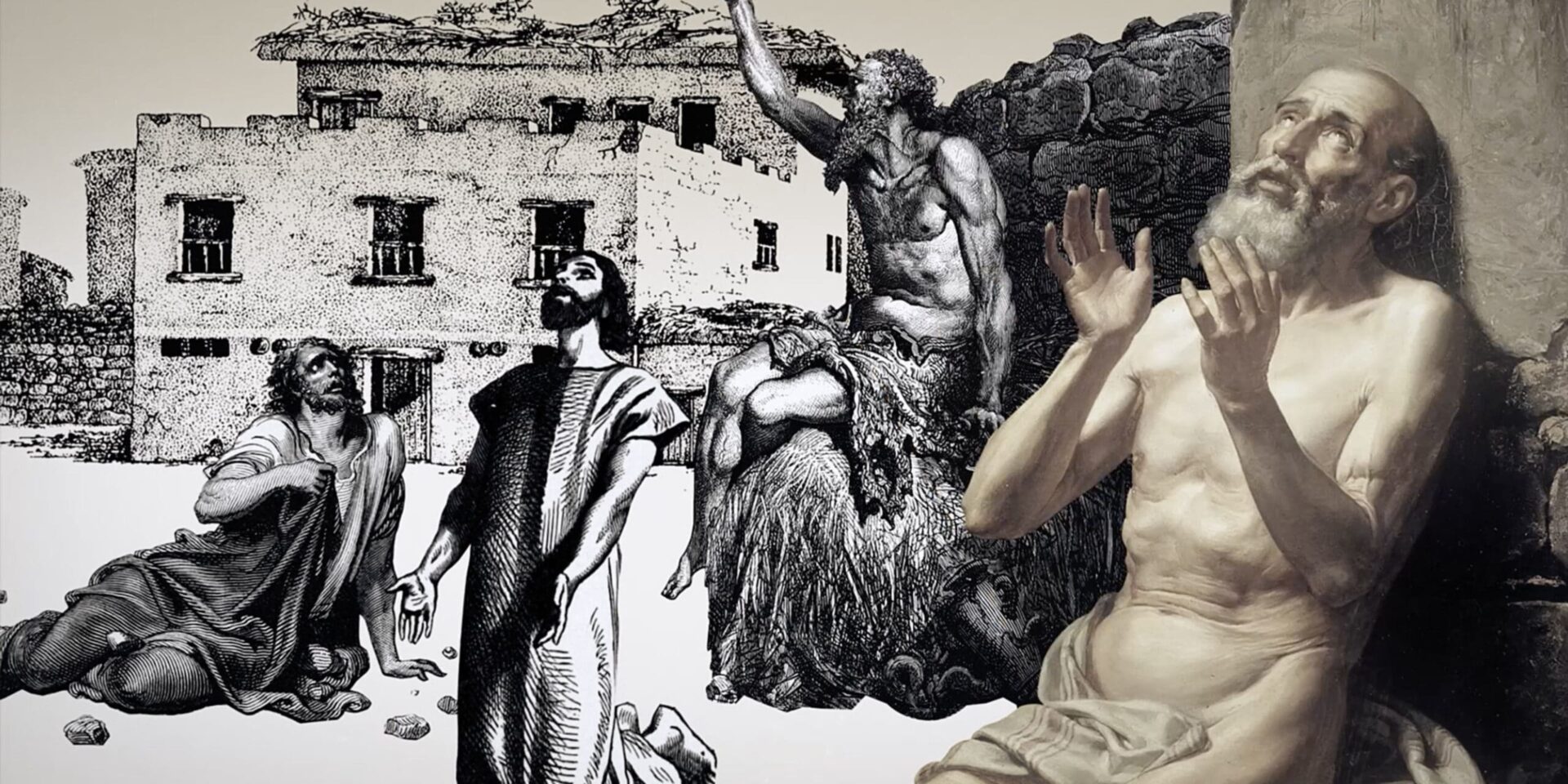The Bible is very consistent in its portrayal of ancient Israelite mourning. People grieving the loss of loved ones, tragedy in the community, offenses against God, devastating warfare, and the like are described as putting on sackcloth, tearing or rending their clothes, taking off shoes, sitting on dust and ashes, putting dust and ashes on their heads, cutting or shaving their hair, and fasting. These actions could be done all together, individually, or in any combination, and likely went along with wailing and appropriate grieving songs and laments.
There has been quite a bit of research that has gone on in trying to understand the significance of these mourning rituals, and even in attempting to track where there came from. It’s been noted that all these practices involve humiliation of the mourners, and in some way connecting them to their own mortality – in a sense becoming like the dead themselves. Naked or unclothed, returning to dust, not eating, and generally losing the physical markers (like hair) of living people. As it is often said, there’s no better time than a funeral to contemplate one’s own mortality. In this sense, these mourning rituals would be grieving the specific loss of a loved one’s life while broadly bemoaning the overall human condition of mortality before God.
“I had heard of you by the hearing of the ear, but now my eye sees you; therefore I despise myself, and repent in dust and ashes.”
Job 42:5-6
There has also been a noted progression of practice when it comes to sackcloth. In the early passages of the Bible, clothes are torn and removed, and sackcloth is worn, in later tradition sackcloth is worn in addition to torn garments[1]. Sackcloth was a rough garment in the style of a loincloth. This dress paired with going barefoot has been seen as an association with the dead by some, as noted above, and by others its seen as removing a layer of civilization as going back to how life would be without all of the systems that man has in place. In this case, it would be a way of remembering who we are, and that in the end, we’re still mortal even in the midst of our societal greatness. As Adam and Eve had to leave the garden just clothed and without shoes, so humanity is. Death is the great equalizer.
There are also a few theories about putting dust and ashes on one’s head during mourning. An older theory sites an ancient practice of burial in which a mound of dirt was put over the grave – this theory posits that mourners carried baskets of dirt to the gravesite on their heads to build the mound, leaving them with dirty hair and clothing; a sign to all that they had been involved in a funeral.[2] This practice was then remembered by the act of putting dust and ashes on the head.
Another theory comes from archaeologists excavating Beer Sheva in the 1970s. They discovered that the dirt of the city’s streets was mixed with ashes. This process recycled household ash and had the benefit of increased durability. So, when mourners are described as sitting on dust and ashes these archaeologists put forward that they were sitting on public streets, conducting their mourning for all to see.[3]

Corie Bobechko is a daily co-host, speaker, and writer of Bible Discovery. She also hosts a YouTube channel that shows how history and archaeology prove the Bible. Her heart for seekers and skeptics has led her to seek truth and share it with others. Corie also has a Bachelor of Theology from Canada Christian College.






